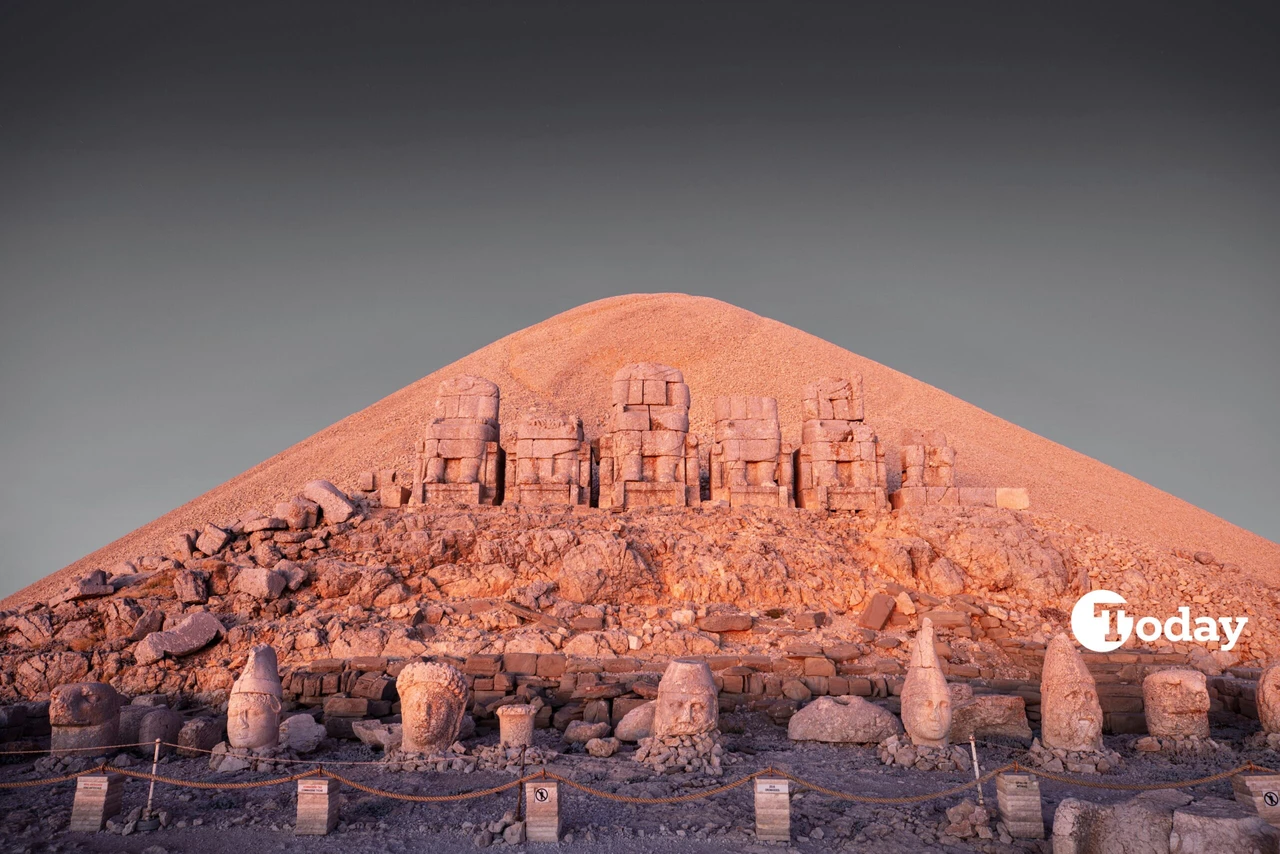900-year-old minbar in Kayseri stands strong in its original glory
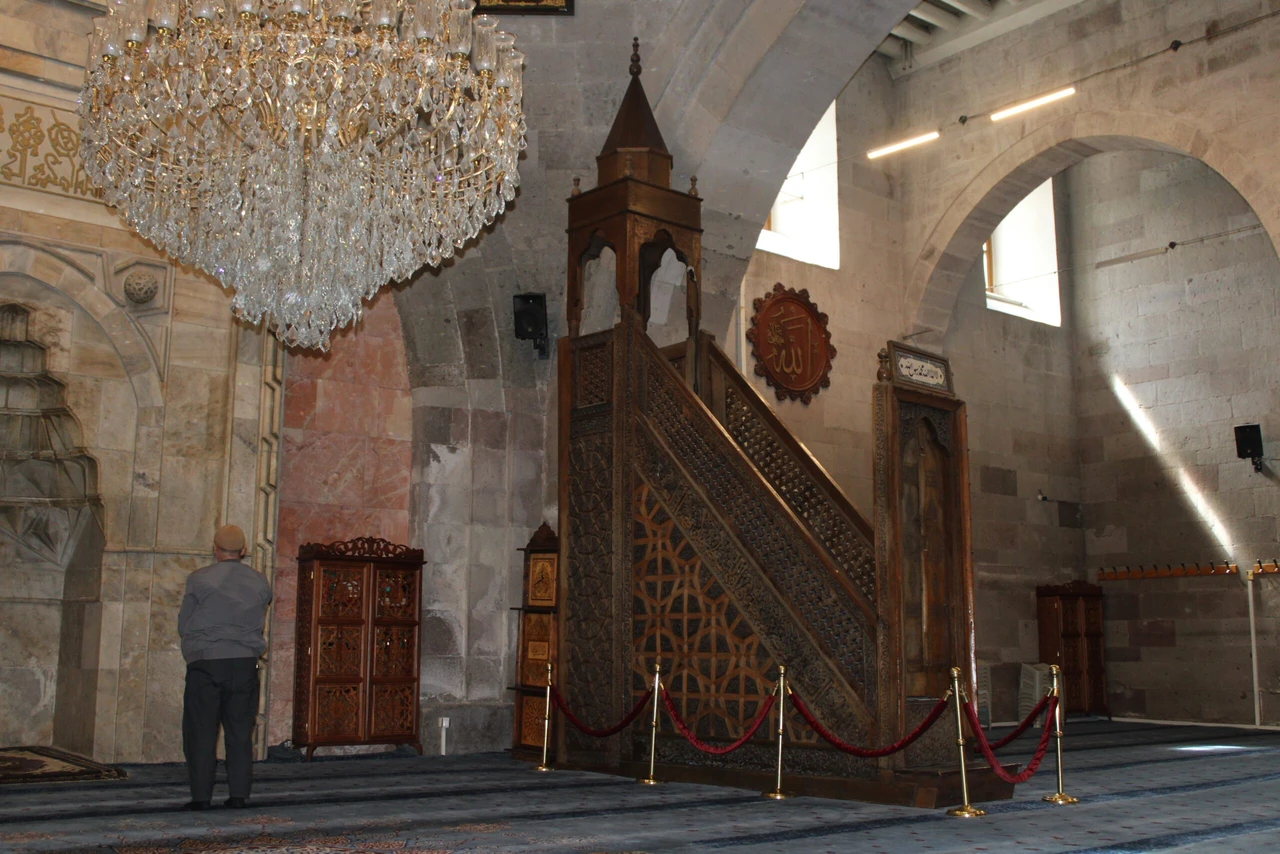 The 900-year-old minbar of the Ulu Mosque in Kayseri was built by the Danishmend ruler Melik Mehmet Ghazi in 1135. (IHA Photo)
The 900-year-old minbar of the Ulu Mosque in Kayseri was built by the Danishmend ruler Melik Mehmet Ghazi in 1135. (IHA Photo)
The historic minbar (pulpit) of Kebir Mosque, also known as Kayseri’s Ulu (Grand) Mosque, has withstood the test of time for nearly 900 years. Built in 1135 by Danishmend ruler Melik Mehmet Ghazi, the wooden pulpit remains remarkably intact despite centuries of earthquakes, harsh weather, and structural challenges.
Speaking on the architectural brilliance of the minbar, Professor Osman Ozsoy, Kayseri representative of the Foundation for the Protection and Promotion of Environmental and Cultural Values (CEKUL), highlighted the significance of its intricate geometric patterns. “These patterns are not randomly placed; they follow a periodic structure and interlock seamlessly. The minbar has survived earthquakes, roof collapses, and exposure to rain and snow, yet it still stands as strong as ever,” he said.
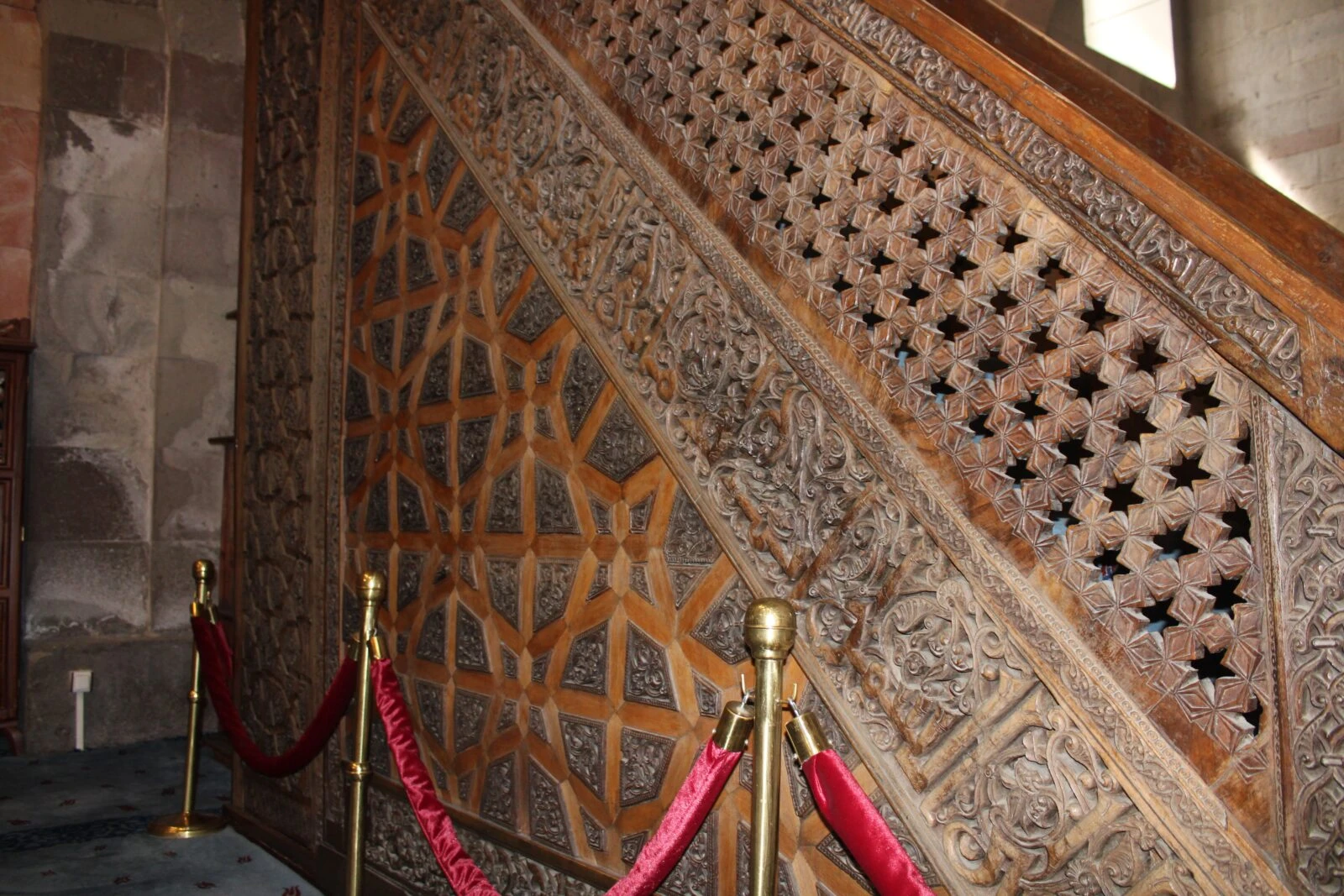
Unparalleled craftsmanship: Secrets of minbar’s longevity
The minbar, crafted entirely using the kundekari technique—an advanced form of interlocking wooden panels—demonstrates the highest standards of woodwork from the medieval Islamic period. Made from solid walnut, the structure features an array of geometric motifs, including hexagons, octagons, and stars, which not only enhance its aesthetic appeal but also reinforce its stability.
Professor Ozsoy noted that the pulpit’s decorations reflect the artistic and mathematical precision of its time. “The minbar embodies elements of 13th-century craftsmanship, including balustrades, panels, and calligraphic inscriptions from the Quran. The patterns symmetrically interconnect, displaying a complex yet harmonious design,” he explained.
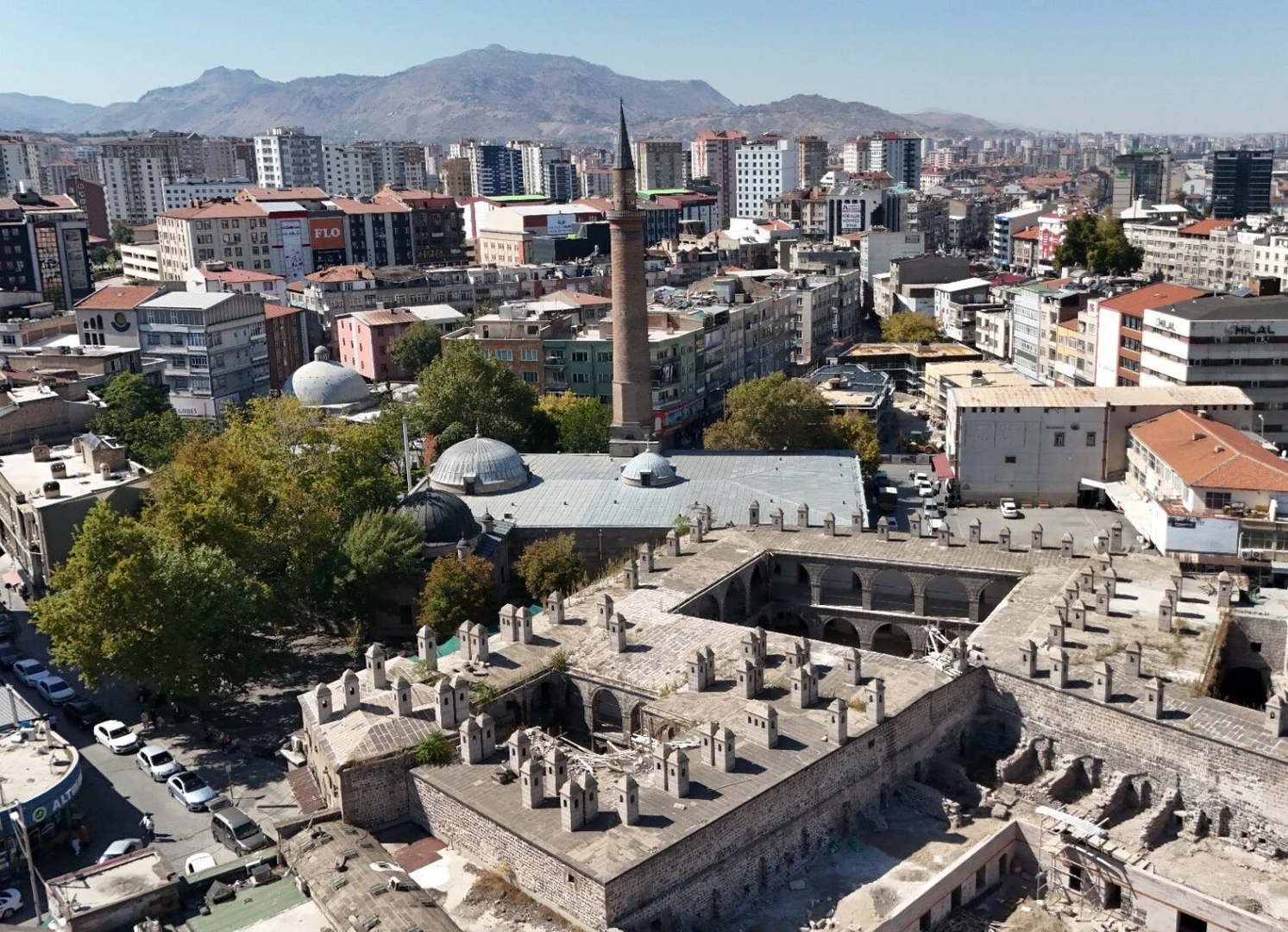
A historic monument that withstood centuries of challenges
Kayseri’s Grand Mosque has a long history of renovations and restorations. The mosque was initially constructed in 1135 by Melik Mehmet Ghazi and later restored in 1206 by Muzaffereddin Mahmud, a descendant of the Danishmend dynasty. The only surviving inscription, located near the northern entrance, documents this restoration under the reign of Sultan Keyhusrev.
The structure endured severe damage during the major earthquake of 1716, leaving it in ruins for nearly six years. However, in 1723, the mosque underwent an extensive restoration led by Haci Halil Efendi, a high-ranking official of the Ottoman palace kitchens. This restoration included rebuilding the collapsed dome, repairing minarets, and reinforcing the structure to withstand future disasters.
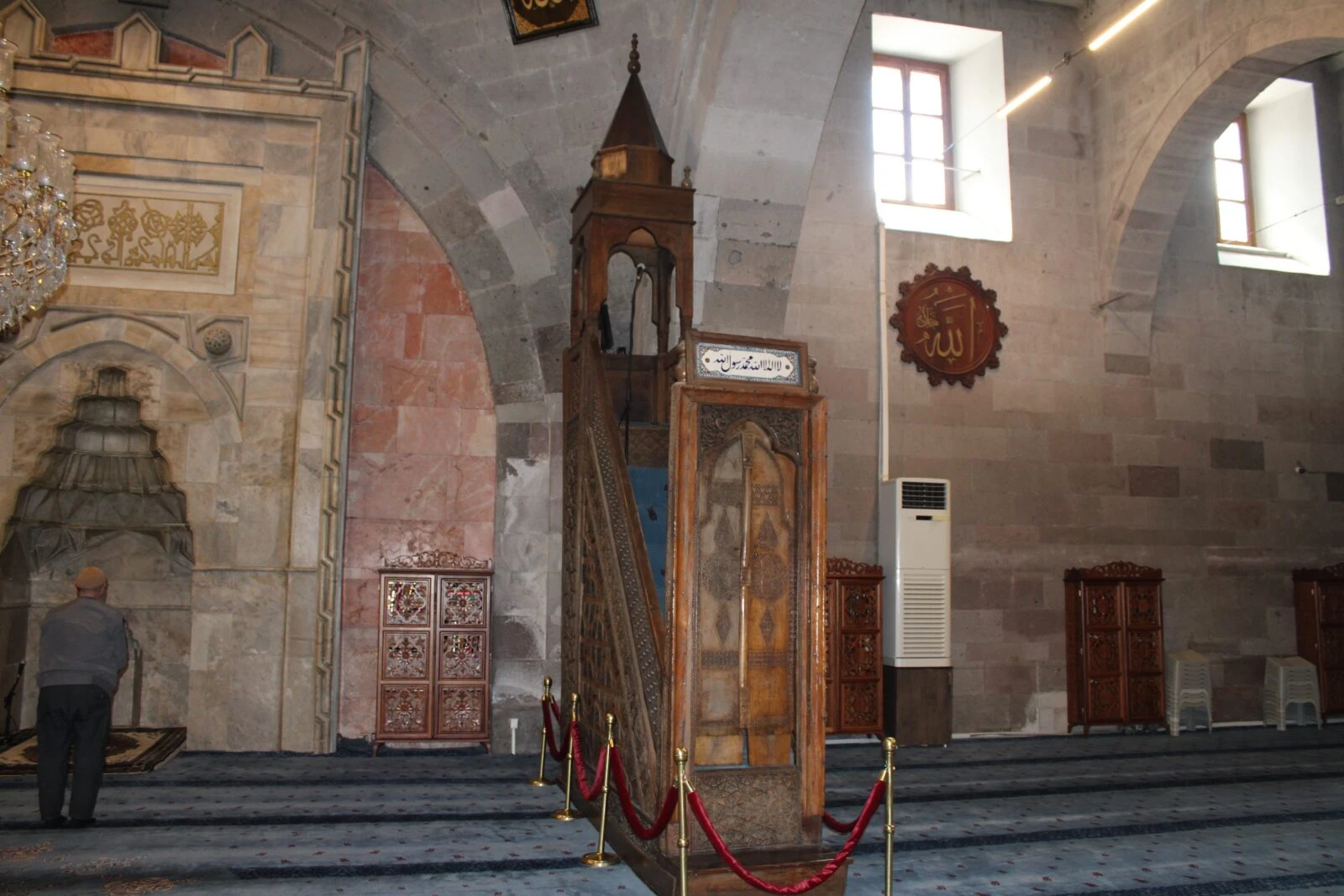
Despite centuries of adversity, including multiple earthquakes and severe weather conditions, the minbar remains a testament to the exceptional craftsmanship and durability of medieval Islamic architecture.
Kayseri’s Cami-i Kebir stands today as a proud symbol of Türkiye’s rich cultural heritage, drawing visitors and historians alike to admire its enduring legacy.
